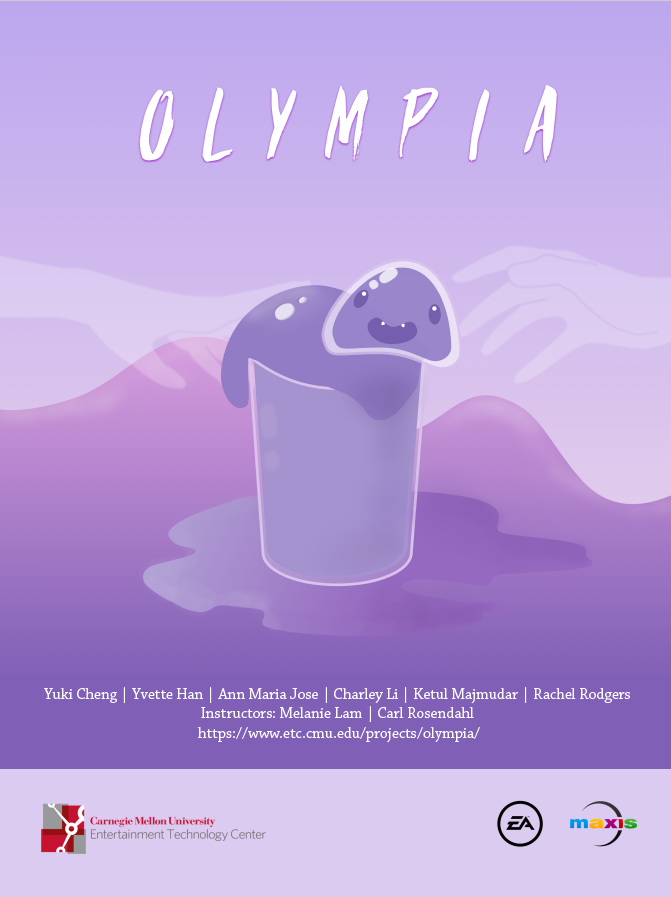Our week began with a lot of technical exploration. After a discussion on Friday with a fluid engineer from Schell games, we started doing some testing with Flex, a fluid simulation plugin from Nvidia. By Tuesday we had our first show-able prototype which allowed guests to use the leap motion to push blobs of slime around VR space. On Wednesday, for our client meeting, the prototype allowed guests to spawn new slime from their body and then push it into shapes with their hands.
Some good news was that our reported that using the leap motion helped them feel like they were interacting with slime. Seeing representations of your hands interacting with the blobs has a way of tricking your mind into perceiving it as tactile experience. However, it was pointed out that our current slime interactions don’t offer a lot of fine control and it is almost impossible to actually mold a specific shape.
Our client got to see two versions of slime with different properties including more and less drag. They noted that they loved how responsive the demo was with less drag (It was a bit like smacking balloons around a room) and wondered if we could explore how different slime looks when linked to different physics properties.
As the week went on we needed to commit to a design idea that allowed us to move forward with our development. Our current focus for halves was on creating the first minute of gameplay. We want to explore switching between two different states of interacting with slime. First, as a particle system which will allow guests to stretch and mold slime. Second, as a character/mesh which would still be interact-able but would move on its own and would
Our technical artist began exploring the ways in which we could change the facial expressions of the slime. We want the slime characters to have visible reactions to each other and to the player. We are hoping to create some emergent stories by giving each slime an AI. Character animation has also begun; we are making each slime with a single joint and animating reactions and small movements around that. We will consider adding soft body physics to the characters later.
The week wrapped up with a lot of discussion around design. We came up with a simple plan for gameplay suited for Halves that will give direction. The this concept was shared with our project Adviser Melanie, and she encouraged us to think about the experience as a bit more of a sandbox of puzzles rather than a puzzle game with strict progression systems. We will be looking at how we can work that into our game more during week 6.
We also finished out our branding including our poster, logo and half sheet. Yuki our UI/UX designer updated our poster look to be in theme with our project after we focused in on the slime concept.
